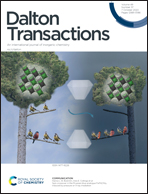Synthesis of nickel–copper composite with controllable nanostructure through facile solvent control as positive electrode for high-performance supercapacitors
Abstract
The surface characteristics of electrodes vary depending on the solvent used. Furthermore, electrochemical performance varies depending on the surface morphology of the electrode. In this study, we grew 3D binary NiCu-based composites on Ni foam, via a binder-free hydrothermal method, for use as a cathode in high-performance supercapacitors. We employed different solvents to prepare the electrodes by adjusting the ratio of deionized water (DI water) to methanol. The electrode prepared using DI water as the solvent had the largest surface area with a nanowire structure. This morphology allowed for good electrical performance by greatly improving the electrode and electrolyte contact area and shortening the ion diffusion path. The optimized deposition of NiCu(CO3)(OH)2 nanowires (50 mL of DI water as solvent) showed an excellent maximum specific capacity of 758.9 mA h g−1 at a current density of 3 A g−1, as well as outstanding cycling performance with 87.2% retention after 5000 cycles. In this work, we focused on the large specific surface area and suitable electrochemical properties of NiCu(CO3)(OH)2 electrodes with various solvents. As a result, the asymmetric supercapacitor (ASC) using the NiCu(CO3)(OH)2 electrode prepared with 50 ml of DI water as the solvent as the positive electrode and graphene as the negative electrode, exhibited an energy density of 26.7 W h kg−1 at a power density of 2534 W kg−1, and excellent cycling stability with 91.3% retention after 5000 cycles. The NiCu(CO3)(OH)2//graphene ASC could turn on an LED light and demonstrated better electrical performance than most previously reported nickel- and copper-based carbonate hydroxide ASCs. In addition, in the present scenario where many nanoscale studies are conducted, a method of controlling the nanostructure of a material through facile solvent control will be of great help to many researchers.



 Please wait while we load your content...
Please wait while we load your content...